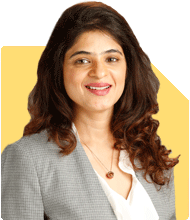Ramalingam Kalirajan |8459 Answers |Ask -Follow
Mutual Funds, Financial Planning Expert - Answered on Jun 04, 2024
He has an MBA in finance from the University of Madras and is a certified financial planner.
He is the director and chief financial planner at Holistic Investment, a Chennai-based firm that offers financial planning and wealth management advice.... more

I am an NRI moved back to India. I have farmhouse and farm with 12 acres (no income now and building with agroforestry and permaculture concepts - invested about 2 crore ) , a landed property worth 85 to 90 lacs, cash of about 6 crores. Having a job with salary of 78 lacs per anum. My expenses would be 2 lacs per month and wanted to keep aside 1 crore for my son's higher education ( in 9th grade now and may go to overseas for studies). How can generate passive income with less risk investments and plan to retire may be in 4 years. Right now i am 42
You have a diversified asset base including a farmhouse, land, cash reserves, and a well-paying job.
You also have significant expenses and plans for your son's education.
Planning for Education
Set aside Rs. 1 crore in a safe, low-risk investment for your son's education.
Consider options like fixed deposits, debt funds, or bonds.
Generating Passive Income
Passive income can be generated through various low-risk investments.
Fixed Deposits: They offer stable returns with low risk.
Debt Mutual Funds: These funds invest in bonds and fixed income securities.
Government Bonds: Safe and provide fixed returns.
Monthly Income Needs
You need Rs. 2 lakhs per month for expenses.
This translates to Rs. 24 lakhs per year.
Income from Investments
To generate Rs. 24 lakhs annually, invest in low-risk options.
Assume an average return of 6%.
You need a corpus of Rs. 4 crores invested at 6% to generate Rs. 24 lakhs per year.
Allocation of Rs. 6 Crores
You have Rs. 6 crores in cash.
Step 1: Set aside Rs. 1 crore for your son's education.
Step 2: Invest Rs. 4 crores in low-risk options to generate passive income.
Step 3: Keep Rs. 1 crore as an emergency fund.
Investment Options
Fixed Deposits: Safe, offer guaranteed returns.
Debt Mutual Funds: Diversified and managed by professionals.
Government Bonds: Very safe with assured returns.
Balanced Approach
A combination of fixed deposits, debt mutual funds, and government bonds balances safety and returns.
Professional Guidance
Investing through a Certified Financial Planner (CFP) ensures professional management.
Disadvantages of Direct Funds
Time-Consuming: Direct funds need constant monitoring.
Lack of Guidance: Without expert advice, you may miss crucial opportunities.
Benefits of Regular Funds
Professional Management: Regular funds are managed by experts.
Convenience: Saves time and provides professional insights.
Preparing for Retirement
You plan to retire in 4 years at age 46.
Ensure your investments generate enough passive income.
Inflation Consideration
Factor in inflation while planning for future expenses.
Emergency Fund
Maintain an emergency fund of at least Rs. 1 crore.
This provides financial security against unforeseen circumstances.
Tax Planning
Consider tax implications of your investments.
Tax-Free Bonds: Offer tax-free returns.
Debt Funds: More tax-efficient compared to fixed deposits.
Regular Review
Review your portfolio regularly with a CFP.
Conclusion
Your financial situation is strong with diverse assets and income sources.
Focus on low-risk investments to generate passive income.
Plan for your son's education and maintain an emergency fund.
Best Regards,
K. Ramalingam, MBA, CFP
Chief Financial Planner
www.holisticinvestment.in
You may like to see similar questions and answers below
Ramalingam Kalirajan |8459 Answers |Ask -Follow
Mutual Funds, Financial Planning Expert - Answered on May 20, 2024
Ramalingam Kalirajan |8459 Answers |Ask -Follow
Mutual Funds, Financial Planning Expert - Answered on Sep 02, 2024
Prof Suvasish Mukhopadhyay |651 Answers |Ask -Follow
Career Counsellor - Answered on May 16, 2025
Prof Suvasish Mukhopadhyay |651 Answers |Ask -Follow
Career Counsellor - Answered on May 16, 2025
Radheshyam Zanwar |1634 Answers |Ask -Follow
MHT-CET, IIT-JEE, NEET-UG Expert - Answered on May 16, 2025
Radheshyam Zanwar |1634 Answers |Ask -Follow
MHT-CET, IIT-JEE, NEET-UG Expert - Answered on May 16, 2025
Ashwini Dasgupta |107 Answers |Ask -Follow
Personality Development Expert, Career Coach - Answered on May 16, 2025
Ramalingam Kalirajan |8459 Answers |Ask -Follow
Mutual Funds, Financial Planning Expert - Answered on May 16, 2025
Ramalingam Kalirajan |8459 Answers |Ask -Follow
Mutual Funds, Financial Planning Expert - Answered on May 16, 2025
Milind Vadjikar |1236 Answers |Ask -Follow
Insurance, Stocks, MF, PF Expert - Answered on May 16, 2025
Milind Vadjikar |1236 Answers |Ask -Follow
Insurance, Stocks, MF, PF Expert - Answered on May 16, 2025
Ravi Mittal |589 Answers |Ask -Follow
Dating, Relationships Expert - Answered on May 16, 2025

























